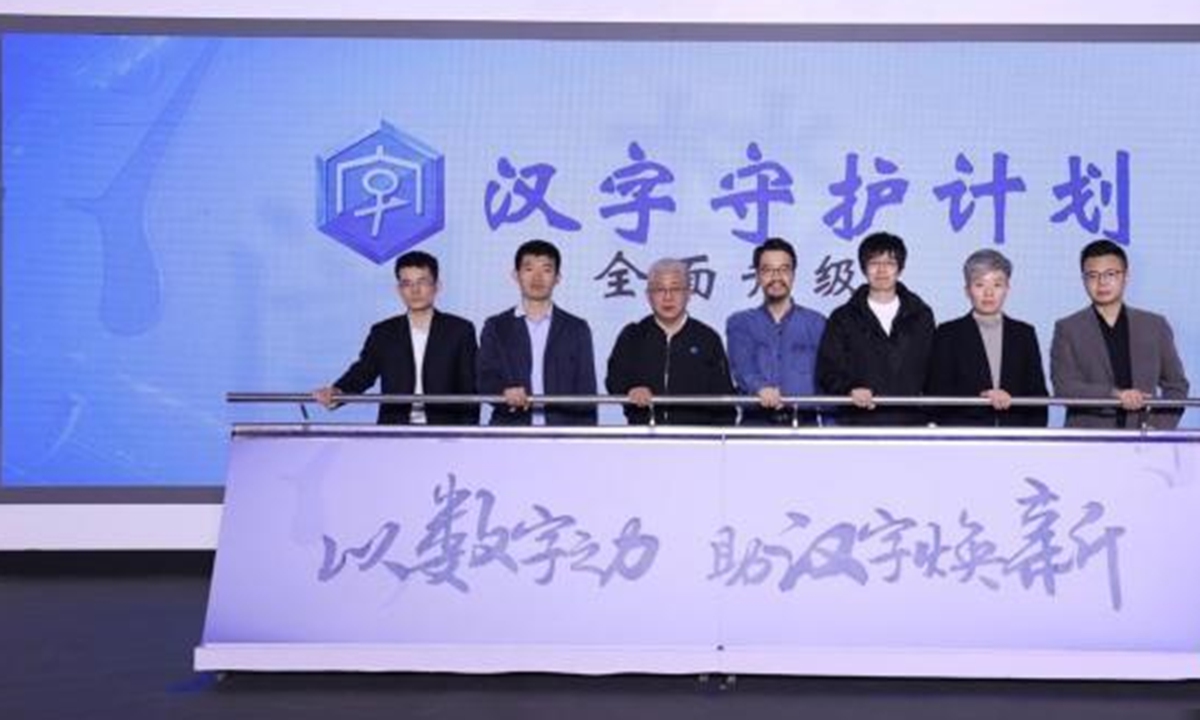ARTS / CULTURE & LEISURE
Rarely used Chinese characters to be collected and made available online

Photo: cnsphoto
China has launched its first WeChat mini program to collect rarely used Chinese characters. The program collects characters that cannot be inputted into computers and uploads them into a character library so that the rarely used characters can be made available for digital display later. Through the mini program, users can photograph and upload characters for submission.
After its launch on April 20, the mini-program received over 630,000 visits on the first day, with users submitting 1,404 rare characters. After professional review, the approved rare characters will be coded and entered into the national standard character library, ultimately achieving barrier-free input and display on devices and information systems such as computers and mobile phones.
Sun Wenlong, vice director of China's Ministry of Industry and Information Technology's research institute, said the institute has taken the lead in formulating a compulsory national standard of Chinese Coded Characters Set for Information Technology, which means all government administrations, products and public service systems must comply with standards, which will effectively help remove the public barrier caused by rare characters. Since the new national standard will be carried out in August, the program is expected to greatly facilitate the implementation of the new standard.
According to statistics, 60 million names of people and places, ancient books and dialects contain rare characters, most of which have not been digitized.
For example, an ethnic minority tribe living in Lijiang, Southwest China's Yunnan Province who take birds as their totem have a surname pronounced nia. However, people with this surname had to change their surname to ya (meaning duck in Chinese) because the surname cannot be inputted and displayed on computers.
On Friday, the news that "the entire village had to change their surname to ya" became a hot search on China's Twitter-like social media Sina Weibo, accumulating 140 million views.
"Since computers lack this character, the system cannot recognize it," 25-year-old Ya Xingui said. "If you didn't change it, you couldn't even take airplane or train, nor buy any tickets."
Ya Zhenggao, 40, recalled that before he was 10 years old, nia still appeared on his ID card, but when he went to get his motorcycle certificate, he found that it had been changed into ya. Till now, he still keeps his original ID card with his handwritten surname.
He also said that since ya could not convey the true meaning of their surname nia, children born today all take their mothers' surnames. After learning their problem had gone trending, he was overjoyed and said he expected that "their problem can be properly solved."
In order to promote hardware and software changes, Sogou Input Methods has rolled out a one-stop solution. The database contains 90,000 Chinese characters in a new library of standard characters, and contains rare characters through disassembling fonts, and provides handwriting, strokes and pinyin input. So far, this program has been adopted in finance, medical care, public transportation and other public service areas.
Tencent's Vice President Zeng Yu said, "the digitization of rarely used Chinese characters is a systematic project. Our company will try to solve the problem through the little program collection, which hopefully will benefit people in the future."



